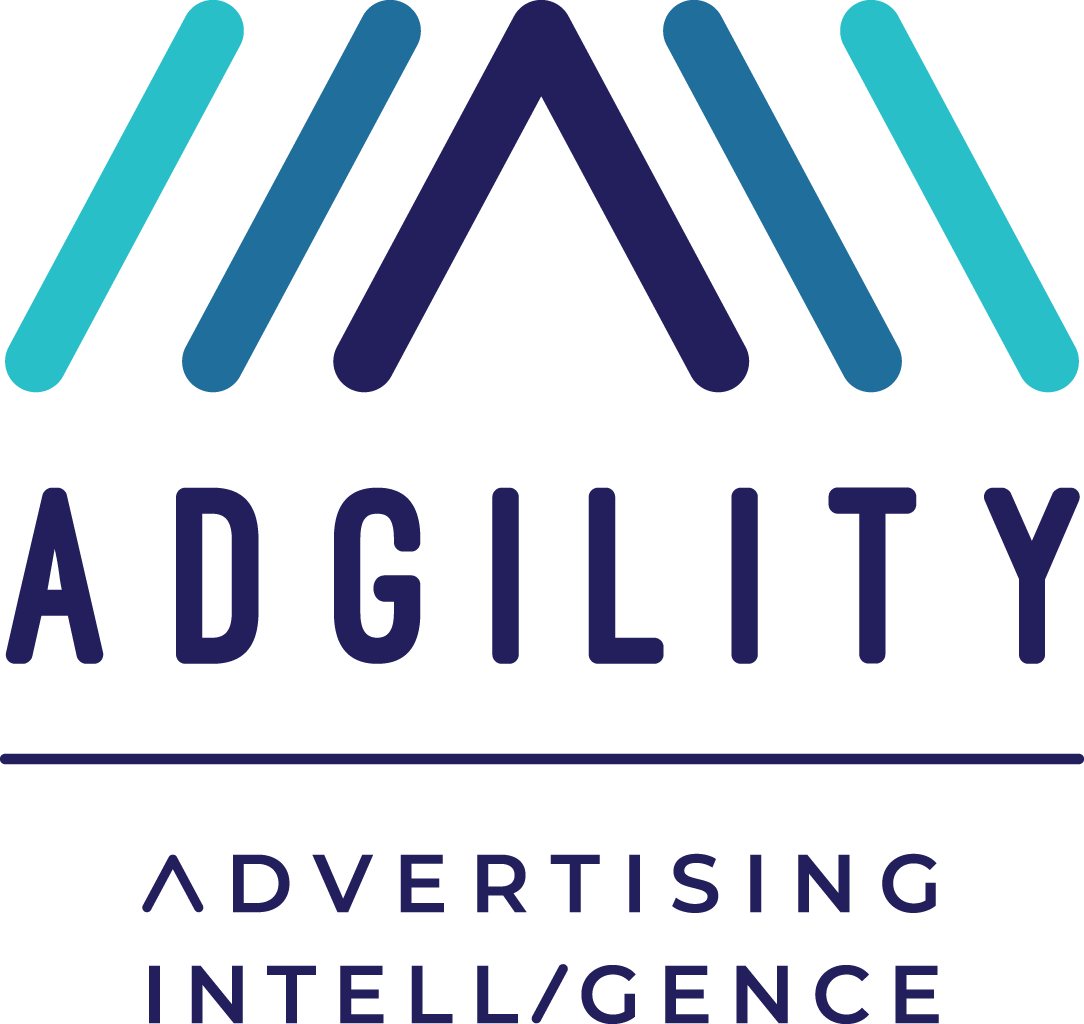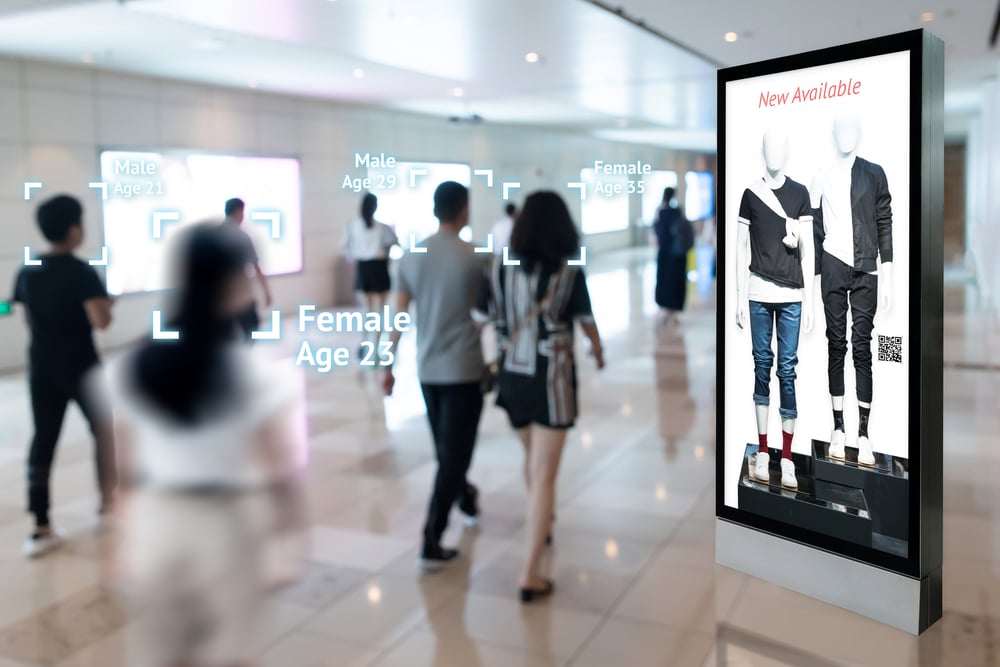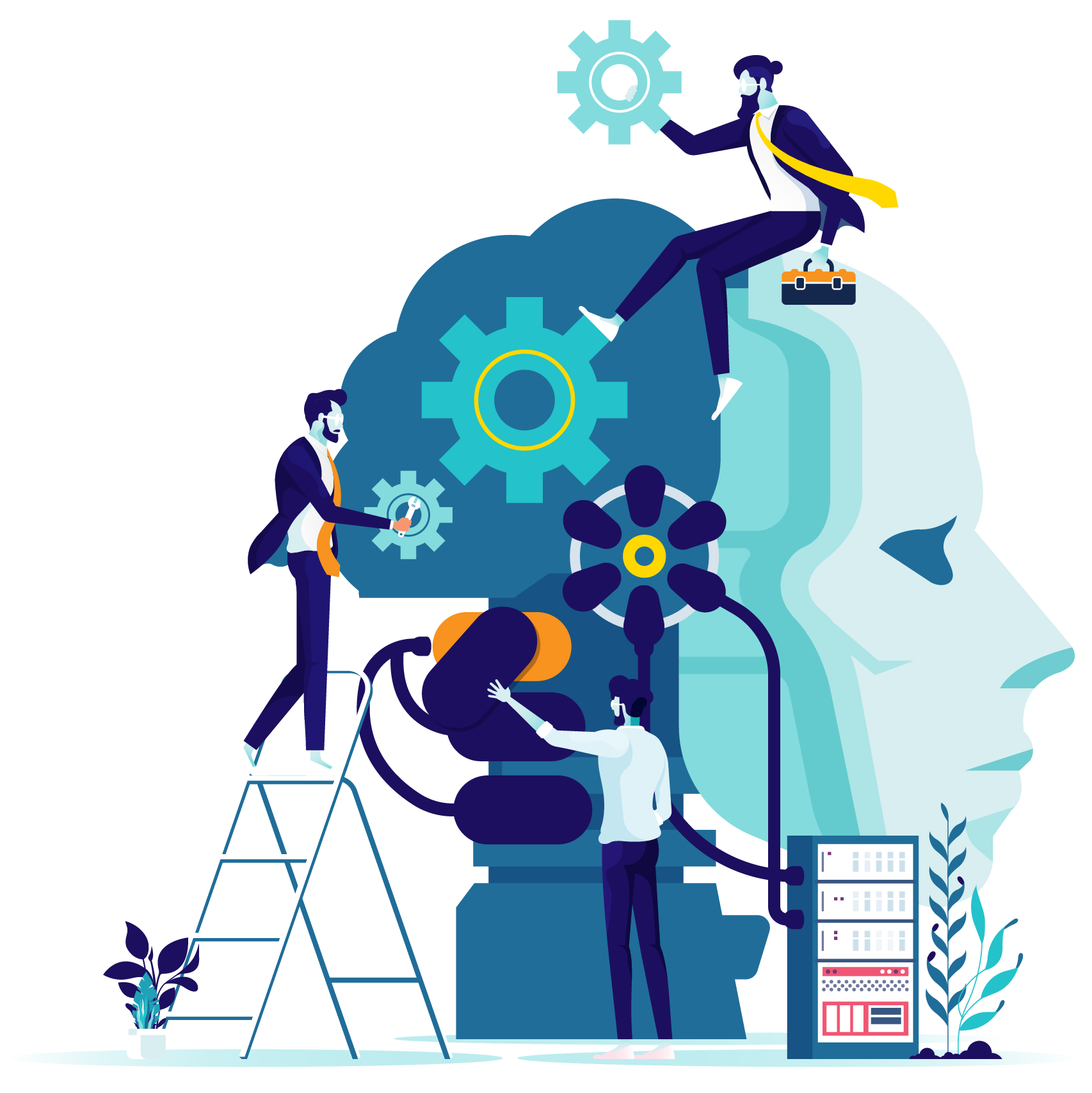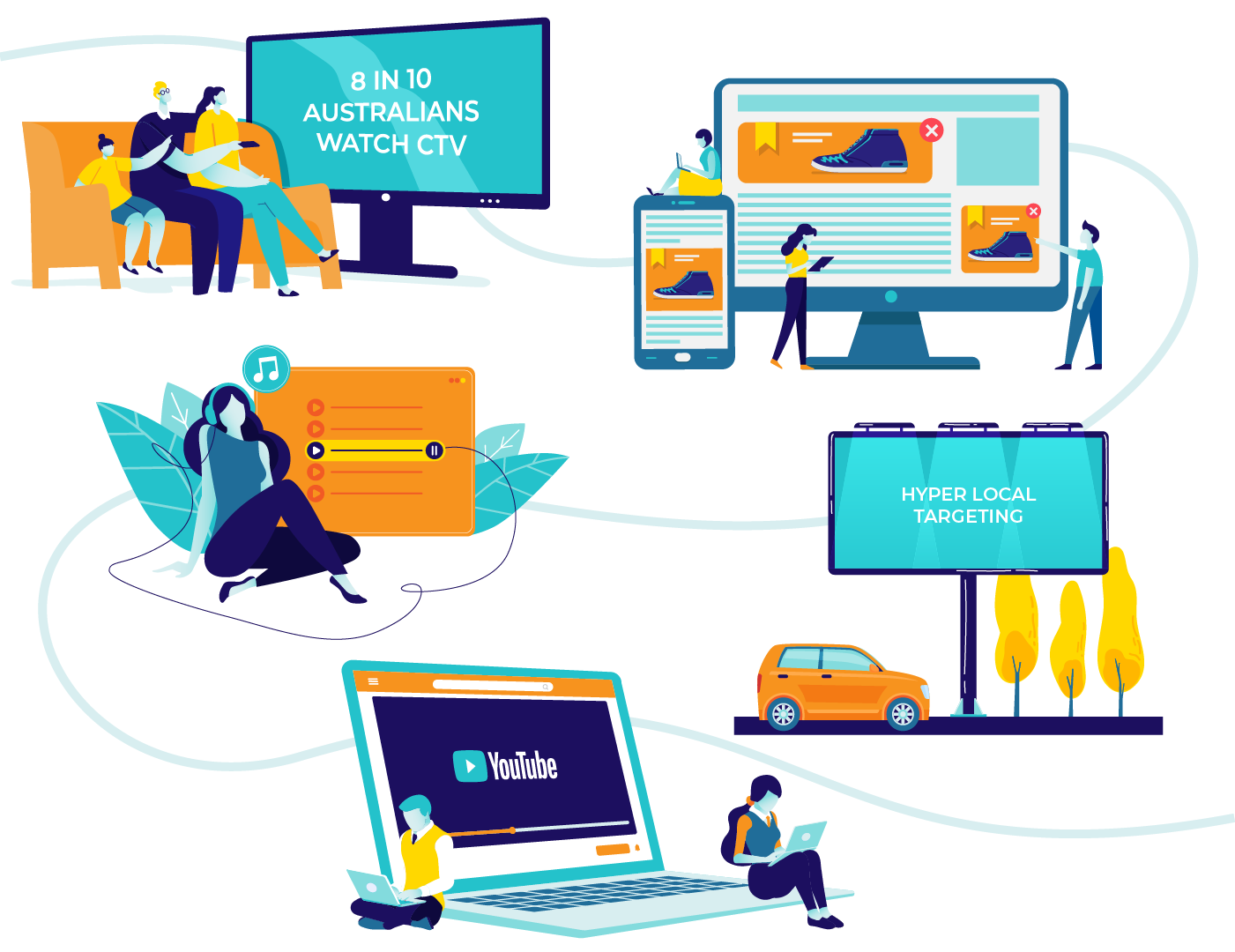As online advertising continues to evolve at a rapid pace, becoming more technologically advanced and data-driven, so too should your digital marketing strategy.
The challenge for most marketers today is how to differentiate themselves in a world where consumers are hit with hundreds of advertising messages and choices every day. How do you stand out? How do you become more relevant? How do you reach the right customers and know that your advertising budget is working not wasted?
In this article, we'll show you how you can differentiate your marketing with AI-driven advertising. We'll talk about what it is, how it works and showcase how we did it for global baby wipes brand WaterWipes - utilising a modest budget to drive remarkable results! Then, we'll demonstrate how it can turn your sales funnel into a pipeline, converting more prospects into customers faster and for less investment.
What is AI-Driven Advertising?
AI-driven advertising is a term used to describe technologies that use advanced machine learning to make optimal decisions that work towards meeting an advertiser's goals. The advanced software system reads billions of data points from tracking and mapping user behaviours on the internet over time, identifying overarching patterns and trends and creating its own insightful pathway or what is called an 'algorithm’. This algorithm is what creates Artificial Intelligence or 'AI'.
AI in advertising makes crucial decisions 'on the fly' or what we say in digital marketing 'in real time', improving the advertiser’s opportunity to reach, engage and acquire more customers faster with more efficiency. 
Here are some examples of some of the decisions AI can make when trying to work out the most cost-effective pathway to conversion:
- What type of user should it serve an ad? For example - a certain type of demographic, user behaviour, interest category, search behaviour, site keywords etc?
- What type of ad format is more likely to attract a click-through?
- What time of day is the audience segments more likely to convert?
- What type of website (news, recipes, weather, politics, is more conducive to engage and then convert a user?
- What types of apps do these audiences segments use on a regular basis?
- What type of bid (CPM, CPC, CPMC) it should pay to target a particular user based on their likelihood to convert?
- How much is the max required to bid to convert this particular audience segment in comparison to another?
- How many times does the audience need to be retargeted to make a sale within the ave conversion window?

How do you get started with AI-Driven Advertising?
Most marketers will utilise a programmatic demand-side platform, or ‘DSP’, to leverage Artificial Intelligence in their paid advertising. A DSP is a programmatic advertising platform that automates the buying of ad impressions for a specific target audience through a process called ‘real-time bidding’ or 'RTB'.
For example, instead of having to go directly to lots of different publishing networks like Google Ads, TEADS, News Extend, Microsoft, Outbrain, Nine Digital etc, DSPs can access ad inventory across a vast amount of networks simultaneously, giving advertisers access to a lot more ad inventory and eyeballs from one, single platform.
Programmatic advertising platforms or DSPs are popular because they allow marketers to merge their media buying on web channels into one platform. This way, they can get data faster while also reaching more people.
How Does AI-Driven Advertising Work?
First, the programmatic system needs sufficient conversion data from the advertiser’s site to begin learning. For larger retailers making hundreds or thousands of sales per day, this process happens quickly, often within days. However, for smaller retailers with fewer daily conversions, it may take anywhere from 1 to 6 months for the system to gather enough data to optimize effectively.
By analysing user behavior online, the system creates what is known as a predictive audience segment. This segment is built from your existing web traffic, combined with insights gathered from campaign performance across different channels and formats. The AI tracks user behavior and optimises campaigns based on those interactions, leading to more accurate targeting.
Once the AI creates these predictive audience segments, it participates in the real-time bidding (RTB) process—the auction for placing ads in front of the right audience, at the right time, on the right channel. Guided by the marketer’s goals and predictive insights, the AI serves ads in a specific sequence to users most likely to convert. As the technology learns more about the user and their interactions with media, it refines the funnel, guiding the user toward the advertiser’s ultimate goal—whether that’s a purchase, sign-up, or other key action.
INTERESTING FACT:
Many retail marketers still rely on ‘lookalike’ audiences to find new customers, still a popular tactic in social media advertising. However, this approach is becoming outdated because it relies solely on existing customer data which can become outdated very quickly. In contrast, AI-powered predictive audiences use a combination of data, such as ‘in-market’ behaviours, browsing patterns, and real-time intent signals from the internet. As a result, AI’s predictive audiences have been shown to perform up to 8x better than traditional ‘lookalike’ audiences due to their ability to factor in real-time and behavioural data.
How can AI-driven advertising turn your sales funnel into a pipeline?
Marketers using AI-driven targeting in their paid advertising strategies typically notice a shift in performance within just a few weeks. This usually begins with a sharp increase in web traffic, followed by a noticeable decrease. The initial spike is due to the AI serving more ad impressions across a wider range of formats and larger audiences, while the decline occurs as the technology starts learning from the accumulated conversion data. For retailers, this often includes tracking actions like items being placed in carts or added to wishlists.
By monitoring these 'conversion points' - such as purchases, downloads, video views, or newsletter sign-ups - the AI refines its targeting, learning who to focus on and who to exclude in order to meet the advertiser’s objectives.
Over time, marketers start to see improvements in key metrics: average user sessions increase (more pages viewed, longer time spent on site), and conversion costs decrease. This means advertisers are spending less to find and engage the right prospects, ultimately converting them into paying customers more efficiently.
In short, your sales funnel starts transforming into a more efficient pipeline, driving sustained growth and conversions.
Case Study: How AI Advertising helped WaterWipes compete against bigger brands
%20(002).jpg?width=716&height=477&name=Park_Beach_Plaza_NSW_WaterWipes_Q3_2021%20(22174)%20(002).jpg)
Global FMCG brand WaterWipes, known for its pure baby wipes, faced a major challenge when larger competitors had already launched their biodegradable range in Australia and New Zealand. With bigger brands and bigger budgets dominating the market, WaterWipes needed a smart, data-driven approach to not only stand out but also drive sales for their new biodegradable babywipes product.
The Power of AI in Programmatic Advertising
Adgility implemented an AI-driven programmatic advertising strategy using Google’s Display & Video 360 (DV360) platform. By leveraging AI to dynamically optimise ad placements across digital channels, WaterWipes was able to reach high-value audiences on platforms like YouTube, Connected TV (BVOD), and digital out-of-home (DOOH). AI also played a crucial role in building and refining WaterWipes’ customer database, helping them target new, high-potential consumers while re-engaging existing customers.
Results that Speak for Themselves
In just three months, WaterWipes saw a 22% increase in sales of its biodegradable product. The campaign exceeded audience reach targets by 25%, reaching almost 5 million Australians, and web traffic surged by 280% compared to the previous year.
Is AI-Driven Advertising Right For My Business?
AI-driven advertising offers significant advantages for businesses, especially those looking to scale leads and sales by reaching larger and more diverse audiences. However, marketers should be aware of a few key considerations:
1. Full Funnel Mindset
To maximise AI’s potential, it’s essential to adopt a full funnel mindset - investing in both brand and direct response advertising. This gives the AI more data to learn from, improving overall campaign performance.
2. Creative Assets
AI can’t do everything on its own. Marketers need to produce a variety of creative assets and closely monitor their performance. The AI works best when supported by diverse, optimised content.
3. Time and Attention
Successful AI-driven campaigns require more time and attention from data-savvy marketers. AI-driven advertising is not a 'set and forget' type of advertising or tactic - understanding trends and acting on them through continuous campaign optimisation is crucial and the key to sustaining higher ROAS.
4. Consider your Budget
While a larger initial budget isn't necessary, marketers should be prepared to scale their investment once the AI proves effective. As the campaign gains traction, increasing the budget allows for the inclusion of more channels and formats, extending reach and maximising impact across a broader audience.
5. Add to your Ad Tech Stack
For long-term sales performance and sustained growth, consider advanced ad-serving technologies like Google’s Campaign Manager 360, which integrates with programmatic platforms like Google DV360. This setup tracks every touchpoint, from first ad impression to final conversion, providing a comprehensive view of your customer journey and ad performance.
By leveraging AI-driven programmatic advertising, businesses can increase ROAS x10 fold; reducing your cost to reach, engage and convert more ideal customers, and ultimately outpace the competition.
If you'd like to learn more about unlocking the power of AI-fuelled advertising, we’d be happy to chat with no obligation.





.png?width=1892&height=2121&name=Copy%20of%20advancedretargeting_FINAL%20(1).png)
